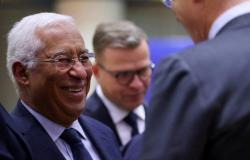A stone’s throw from the Opera, Dr. Hind Wahid opens the doors of the Laroque day reception center (CAJ) to us in the middle of a spring morning. A neuropsychologist and member of the Foundation since 2017, Hind is today director of two CAJs. It is with a warm smile that she welcomes us into her office to tell us the genesis of an extraordinary workshop.
Six months earlier, Dr. Wahid pushed the rear connecting door leading to the “Senior Club of the Tour Des Dames”. Coming for information, she will return with the possibility of integrating people with neurodegenerative diseases into a show of intergenerational transmissions: “it really starts from pure chance,” she explains. A great first for the CAJ since it is the very first time that a workshop brings together children, seniors and therefore seniors with pathology.
The memory challenge
Quickly, the Athénée theater team, which was at the origin of the project, helped Doctor Wahid to integrate into the troupe Mrs. G. and Mrs. C., respectively aged 75 and 94 and respectively suffering from Alzheimer’s disease and Lewy body disease. “We wondered how to get them to memorize the ten or so texts that make up this choir,” explains Hind, “we knew full well that there would be no individual roles but that they would be integrated into the group. Finally one of the two manages to remember some parts of the choruses and the other absolutely nothing. But she’s delighted to be there and she has a fabulous stage presence!”
If Mrs. G. leaves rehearsals with well-encoded memories, Mrs. C. has practically nothing left: “She is so forgetful that she may not recognize her own jacket. On the other hand, she is passionate! And that makes the moment magical: because on stage, there is no longer any pathology. »
Theater as therapy
The big performance on June 21 is approaching. But ultimately, even without Molière on board for our neo-actresses, the Athénée will be the scene of a triumphant victory.
In fact, the piece ticks all the boxes for non-drug therapy. The choir At the heart of the Athénée combines semantic memory work (for reading and memorization), mimicry with some choreographies, self-evaluation and socialization. “We have sensory, cognitive and motor stimulation,” summarizes Dr. Wahid before concluding with a smile, “a therapy but without a white coat, without a medical framework, in short, without anything that can be stigmatizing, and it feels good! “.







